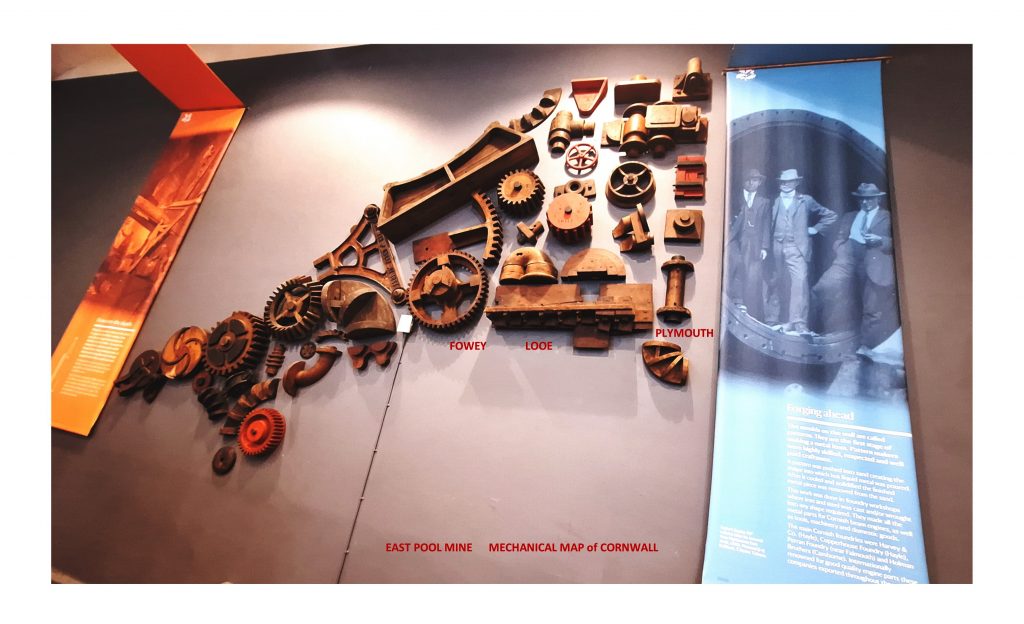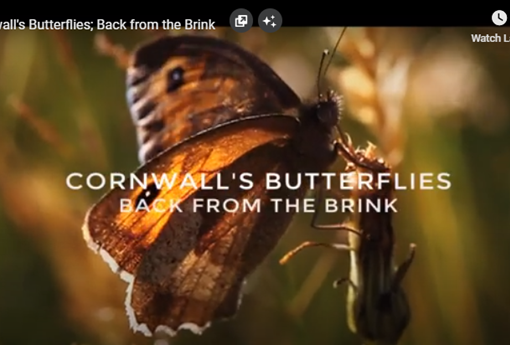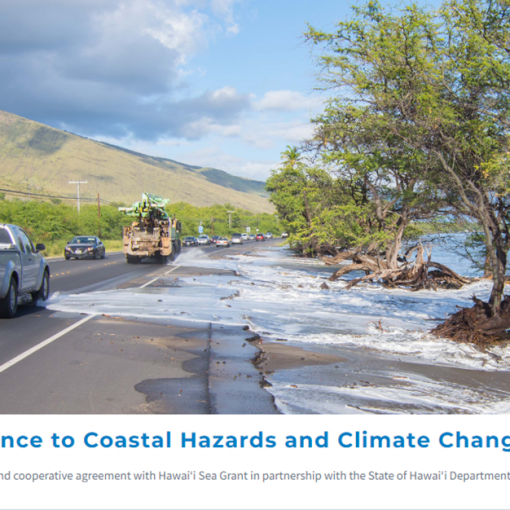14th July
Apples, orchards and a new Cider collaboration; event and info for teachers, a collection of impressive Coastal energy research projects and to finish, a Critical Minerals show.



Whilst Italy is really struggling with baking temperatures, our sunny summer has been replaced by a series of drenching days. Yes, this is good for the rivers, reservoirs and small plants but less good for large-limbed plants and trees. Walking up the lane (middle pic) I see massive bracken branches falling down on all sides, making the narrowness of hedges even more challenging than usual for cars. And around another corner was a big tree branch smashed down from the sheer weight of water in heavy foliage.
This tree topic ties in with work that I have been doing recently, setting up connections with various growers and rural enterprises. It is all part of writing the content for schools, ready to deliver the ‘Harvest Festival for Climate Hope’ next term.

I confess that the starting point of this project is my own sense that old traditions still have much of value to teach us about farming. I’ve been delighted to find this opinion expressed by a top expert, Robin Jackson at the Future Farm of Duchy Agricultural college, as featured in a major climate film from Cornwall Climate Care documentaries. https://www.cornwallclimate.org
CornwallClimate.org has been set up as a charity, due to the generosity of a donor, giving £80,000 initially. The 2 ladies at the helm are amazing and have managed to make 3 outstanding films so far on not much money at all. I really take my hat off to Claire Wallerstein and Bryony Stokes for the range/depth and quality of their work.
Their film on Food and Farming is here https://www.youtube.com/watch?v=P55iNDmjjKM Particularly relevant and interesting are Robin’s conclusions about plant vs meat, in our diets, starting at about 32 minutes in. But the whole film is so fascinating and I find it definitely contributes to Climate Hope.
Apples, orchards and cider
With my starting point established, I then began to research heritage apples and the flying creatures (bees and birds). Happily, everyone I have approached so far has been really generous and open-hearted responding to my requests for conversations, photos, stories and other info to share with schools.
Top of the Tree for apple info (ha ha, excuse the pun) has been Cornish Orchards. Today this is a major brand name and a pretty large-scale enterprise, due to it being taken over in 2019 by a Japanese commercial group. But the lovely thing is that the original vision and ethos of Mr. Atkinson, the founding farmer near Looe has been and continues to be honoured:- Andy was a visionary man and, as well as being a dairy farmer, he was passionate about heritage and the environment.

Apart from Andy’s personal views, the philosophy of Westnorth Manor Farm has also been influenced by King Charles (in his previous role as Duke of Cornwall) because the buildings and land are rented on a tenancy from the Duchy of Cornwall. This has meant strong support and encouragement for its organic and traditional style of operations.
Richard, the manager based at the farm site, has sent me tons of stories about the creation of the old orchards, which were started in the first instance in 1993 as part of a Cornwall Council Cornish Orchards Scheme to preserve rare and native Cornish apple varieties. The oldest orchard, Keepscombe pronounced Kiscum is in effect a museum of old varieties with wonderful names like Pigs Nose, Bread Fruit, Cornish Gillyflower, Cornish Longstem, Lord of the Isles and John Broad. Not all of these make good cider but some are top choice for providing the ingredients of a unique Cider Champagne.
Best not get carried away further on the alcoholic side, or you might not thank me, but there is so much more to celebrate here. Richard has offered a visit or 2 in the autumn, for our schools, which will also show children how bees are kept on the farm to ensure the best pollination in spring, how birds and other wildlife are looked after, how water plays a massive role in the industry, because apples are transported through the site and processes in their own ‘river’ and great care is taken to clean up all the water used before releasing into streams.
Add to those plus points, the final movement of apples using an Archimedes screw and the conversion of apple pulp waste into energy through a bio-digester system and I feel there should a major award for green credentials here. If no one has done so before I think I shall nominate Cornish Orchards for a Sustainability Award this coming autumn. And maybe someone will nominate Meadow Barns too! https://cornwallsustainabilityawards.org/awards/


I am saving up another story of delightful collaboration for next time, but here is a warning … it’s not about alcohol, but will set your mouth watering!
Church event reminder
Monday 17th is the free presentation in Lanlivery church of all this homework and planning thus far, from 3.30. We will test a march (Procession of the Produce) with bagpipes and a stomping dance wearing wellies! This is a tradition firmly entrenched in South African urban culture. It began in the gold mines, as a means for black mine workers to communicate when speaking was not permitted. It is going to form a part of the harvest show, but also connects us later into a performance about Lithium mining.
Plymouth university plays pivotal role in tidal research and major delivery schemes

For this story our view is lifting from Looe in SE Cornwall along the coast to Plymouth, and one of the foremost universities in the UK for Marine and Coastal industry studies. A local TV news this week dropped in a very short note that £7m has been awarded to Plymouth Uni for further development of work in the field of tidal energy. Now I have always felt this source should logically be at the top of our priorities, as it is one of a handful of renewables that is entirely predictable and reliable in its performance 24/7, all year round.
Looking into the departments I soon came across a Research Fellow at the heart of the innovations, Dr. Danny Coles, who kindly responded by email with a list of links. In this one his statement comes in the form of a very plain but clear TED-X video on YouTube – https://www.youtube.com/watch?v=V_WPXKT63nw
Danny’s film takes the variability of renewable energy supply as his main topic, comparing a moment in 2021 when everything seemed to crash at once. There was a lull in wind, nuclear plants were down for maintenance work, gas demand had rocketed and there was a real risk of rolling black outs across Europe, as a result of the weather and Ukraine invasion by Russia.
He explains in simple terms how certain spots around the UK coast, such as Ramsey Sound off Aberystwyth, are perfect for generating tidal power, which he describes as ‘Energy Dense’. By that he means it needs less space (also makes less impact visually) than equivalent wind or solar power.
Orkney, which I have regularly reported on in this blog, is home to a vitally important test facility for tidal turbines, called EMEC or European Marine Energy Centre. Note that word ‘European’, happily not seeming to be damaged by Brexit. Indeed, Danny is employed in a highly ambitious collaboration of France and UK called the Interreg VA France (Channel) TIGER Project. This is an ambitious €48.4m scheme, (of which €32.05m comes from the European Regional Development Fund) to build cross-border partnerships to develop new technologies, test and demonstrate them at a number of locations around the Channel region, and use the learning from this development to make a stronger, cost-effective case for tidal energy as part of the France/UK energy mix. I trust that you will agree, continuation of such collaborative work between our country and our European closest neighbour post Brexit really is one of the very most exciting rays of CLIMATE HOPE I have been able to share, until now.
The most interesting English location, also supported by Plymouth team and now having received permission from the Crown for a 20 year delivery project, is off the Isle of Wight.


The Perpetuus Tidal Energy Centre (PTEC) is a state-of-the-art tidal energy generation project.
It is the largest consented tidal stream energy project in England and Wales. It will reinforce the UK’s position as a world leader in marine renewables. PTEC’s offshore site will lie around 2.5km south of St Catherine’s Point, Isle of Wight. It will produce up to 30MW (enough to power 15,000 homes), of clean, safe, renewable energy, for export to the UK grid.
The Isle of Wight is the ideal location to develop a marine energy project. With its strong tidal currents the area is suitable for a wide range of tidal technologies and deployment options. The proposed development is a game-changing opportunity. It will create much needed jobs and training opportunities. As well as encourage local investment and diversification of local businesses.
In 2020 the then Prime Minister, Boris Johnson, announced plans to make the UK a world leader in green energy.
In November 2021 this was cemented, with the announcement of £20 million per year in government support for the tidal stream energy sector through the Contract for Difference (CfD) scheme. The following month, in December, PTEC resecured the onshore consents and extended a key consent for offshore activities. The project also obtained an updated grid connection offer in the same year.
In December 2022, PTEC entered into its 20-year seabed lease from the Crown Estate. This was the last step to enable the project to move into the final stages of development before construction can commence.
The 30MW of energy Perpetuus expect to be generated should prove the commercial viability of tidal stream energy in the south. Hoepfully PTEC will go well beyond just the creation of renewable energy to bring economic benefits to the Isle of Wight, by building this innovative new industry sector for the island.
It will also stimulate a global interest in the way this renewable energy hub can draw together wind, solar, tidal and energy storage manufacturing and, in time, hydrogen generation, to mirror the energy, investment and job creation successes of EMEC in Orkney.
This capability dovetails with the Isle of Wight Council ambitions to achieve the environmental targets it has set in its recently published ‘Mission Zero’ – Climate and Environment Strategy.
Back to Cornwall, and into the West, for the last section:-
ALL THAT GLITTERS – the Critical Minerals Show, directed and performed by Tom Jackson Greaves – July 12th and 13th
Earlier this month Meadow Barns hosted a visit from a small but very committed group of followers of Climate Action St Austell or CASA. Their website describes the diverse nature of the members – from town councillors, geeky climate scientists, cheeky environmental activists, nature loving home boys to loud women who refuse to let us go quietly from one environmental disaster to the next! Well, that sounds like me to a Tee! But it also neatly sums up my Mother, Jean, who died in 2016 but whose name and story was given a starring role in 3 performances at East Pool Mine this week.
Jean’s burning vision 20 years ago was to have 2 wind turbines on the farm; the show told of the hostility of neighbours, the final failure of the project and the loneliness of her final years. If that sounds pretty dark, it actually was not as it was just the short opening section to a show of so much colour, movement, sound, humour and a much greater mix of emotions, around the future of mining and communities in Cornwall.


If my Mum was the starter, then the main course was all about Lithium pros and cons. There was much that I already knew, but a handful of things hit home … such as the fact only 1 percent of lithium batteries get recycled. I was horrified to hear this and raised it in the Q & A after the Thursday show. Apparently, there is a glimmer of hope coming, in this regard, but extracting from car battery use is tough. In March this year a breakthrough was announced by a team at Manchester University: – https://www.manchester.ac.uk/discover/news/a-university-spin-out-fuelling-the-battery-revolution-in-the-uk/
Watercycle Technologies has recovered commercial grade lithium carbonate and graphite from black mass; a solid black powder containing a complex mixture of metals and impurities recovered from the recycling of end-of-life lithium-ion batteries.
To most people it is not obvious that one of the main barriers to achieving Net Zero is the availability of critical minerals like lithium. But we must ensure that the means of accessing these minerals is environmentally responsible. This requires sustainable primary production and efficient recycling technology, which is what we are creating at Watercycle. We are proud to be a University of Manchester spinout and are proud to be working with two fantastic northern companies in RSBruce and Weardale Lithium who are making the UK’s domestic lithium supply chain possible.
Dr Sebastian Leaper, CEO Watercycle Technologies
Returning to the show – an interactive section followed, with the whole room engaged in discovering which of 4 statements was NOT true? And then being asked to own up to which comfort or commodity of modern life they might be willing to give up? The mobile phone, the car, the hot shower? How much change could we tolerate?
Towards the end, guest expert voices had been recorded round a dinner party table. Each perspective was fascinating but often from diametrically opposed positions.
But most of all I loved the end, when projected little black birds, dipping and diving over the white sand, flew to the accompaniment of a poetic piece called Solastalgia : Meaning: A form of emotional or existential distress caused by environmental changes such as climate change, floods, fires , extreme weathers.
Big thanks to both Tom and Anna Maria Murphy (the wonderful author from down West) for permission to quote this next section:-
(Bird) flies over the curve of the earth.
She sees the vast savannahs,
The floating sinking islands,
And countries where the land’s skins have been pulled back, Vast white lakes of silt in Chile
Where mineral flowers have been harvested, The Ghost towns of Australia,
Where signs creak in hot breezes,
And then,
Blue. Cobalt blue, Congo blue,
Hand dug by a teeming mass of bent backs. Women with children on their backs. Children with children on their backs.
Men with rocks on their backs …
There was no clear ending to this show, only the fact that operating a mine or mines, anywhere in the world, is a double-edged sword. There is money to be made, but all too often at a price that is much too damaging to local people and local landscape. And it seems always to widen the gap of inequality.
I look forward to the loose ends coming together, especially around their final question – ‘What do you hope for, for Cornwall in 2050?’
This is a good point to end with – I am asking you now, ‘What do you hope for, for your home area in 2050?’ Just a sentence or 2, nothing more.
Next week we will compare our hopes with theirs, and keep following the show, wishing it to come back in some other venue or format before too long. Find out more about ‘All that Glitters’ here https://www.artsandcultureexeter.co.uk/news/new-theatre-show-commissioned-by-arts-and-culture




